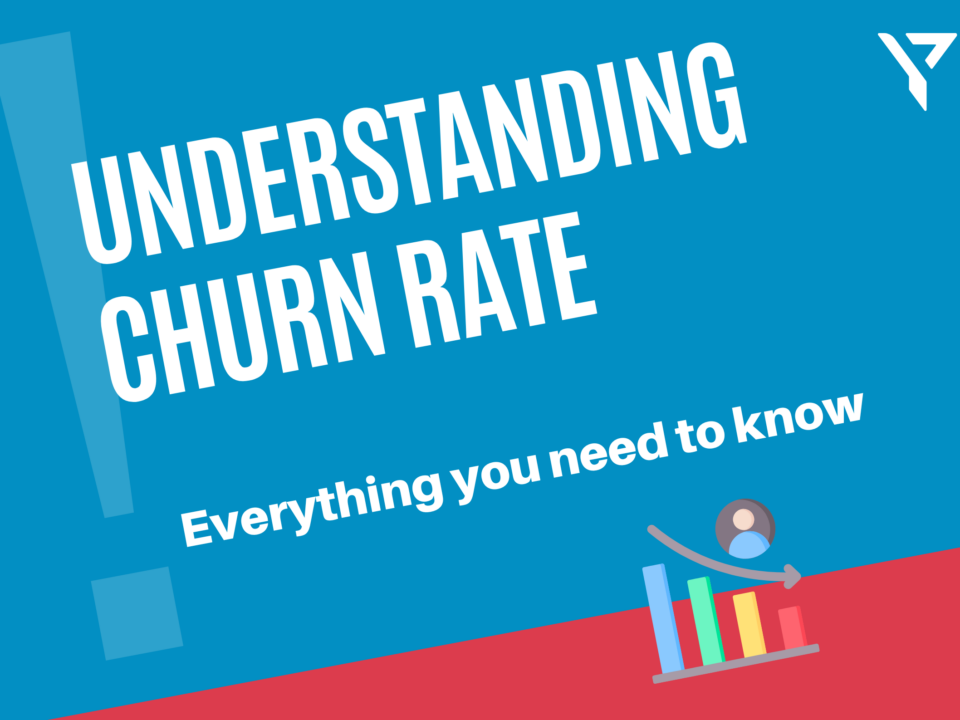Every business has a problem when customers leave them for one reason or the other. This is an important thing to consider if you are a small business owner. That is why understanding customer behavior via the churn rate is important. Read on about churn rate, how we can calculate it, and why it matters.

The churn rate (also known as the rate of attrition) is the rate at which customers stop doing business with a business over some time. It also includes the rate at which employees leave their jobs over a period of time.
Simply put, the customers who were once your subscribers and did not return to your business again.
A high churn rate indicates that more people are leaving your business. On the other hand, a low churn rate means that you are able to retain your customers. These calculations are important while strategizing about the future of your business.
The churn rate determines the number of customers leaving your business. In contrast, the growth rate calculates the number of new customers your business has acquired.
A high churn rate will be considered bad for your business as it tells about the reducing customer base. A higher growth rate will tell the opposite. It means that you are getting new customers, and your customer base is increasing. It is always better to have a higher growth rate than a higher churn rate. This ensures that the revenue and profits are increasing.
According to statistics, a good churn rate for small businesses and startups lies between 10%-15%. This is because their attention is on improvements to their products. For large corporations, the annual churn rate is usually between 3%-8%.
Having an understanding of the churn rate is very important for every growing business. It can tell a lot about customer behavior and how they react to certain changes made in the business.
Satisfaction indicator: The churn rate tells about how satisfied customers are with the products and services being offered. A high churn rate would indicate poor performance of the product or bad customer service. A high churn rate should nudge the business owners to make changes with their products and services.
Increasing the Customers: Keeping the churn rate low automatically allows for the increase of more customers. This directly leads to an increase in profit and revenue for the company.
Understanding the churn rate can affect your business but it is pretty simple to calculate.
The churn rate can be calculated using the formula:
Churn Rate= (Customers at the Beginning of the Period−Customers at the End of the Period)/(Customers at the Beginning of the Period)×100
Define the time period to calculate the churn. It can be for a week, a month, or even a year.
For example, you will have 60 customers in April 2024. By the end of May, new customers came to your business, and it grew to 68.
According to the formula, your churn rate would be ( 68-60/60) x 100, which equals 13%.
Therefore, your churn rate is 13%.
Easy Customer Onboarding: When customer onboarding is easy, it increases the value of the product and services being offered. Offering supportive guides, tutorials, and de os can help with the reduction of attrition.
Customer Satisfaction: Customer satisfaction is one of the keys to turning your unsatisfied customer base into a loyal audience. Timely reactions, surveys, individualized assistance, and efficient issue resolution are essential.
Focus on Customer Engagement: Having your audience follow your brand’s journey and interact with your content can help foster a long-lasting relationship. It also teaches the audience about the product and services and how they can improve their life.
In today’s highly competitive corporate environment, churn rate management and understanding are essential for long-term success. Businesses are able to lower attrition and increase customer loyalty by closely monitoring consumer behavior, improving customer happiness, and utilizing contemporary technologies. In the end, a lower churn rate improves revenue and fortifies the business’s general health, setting the stage for long-term success.
Empowering businesses to optimize their conversion funnels with AI-driven insights and automation. Turn traffic into sales with our advanced attribution platform.



